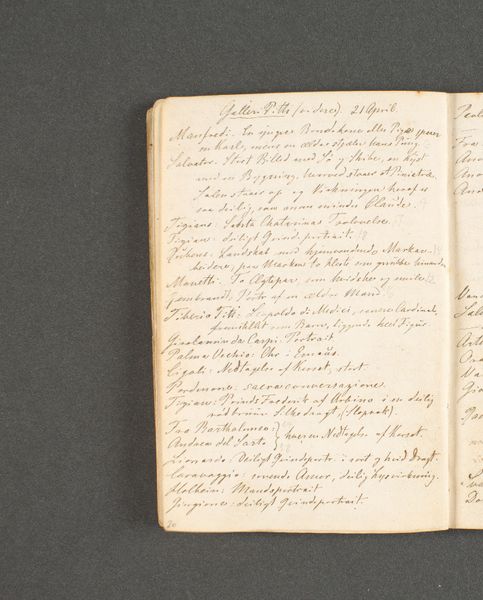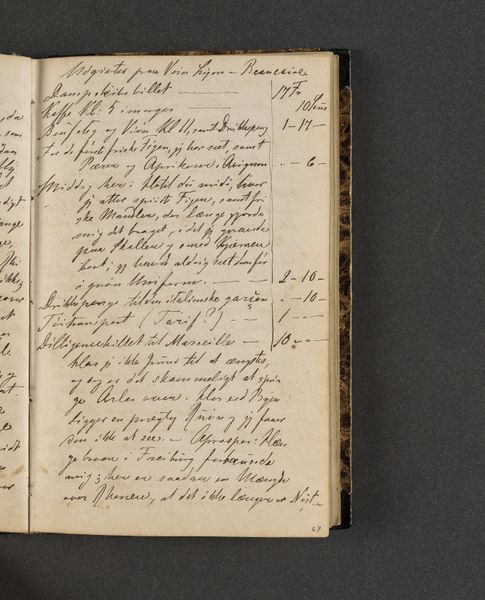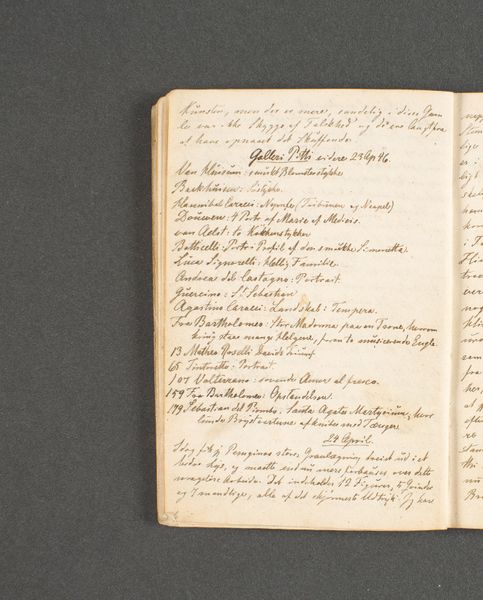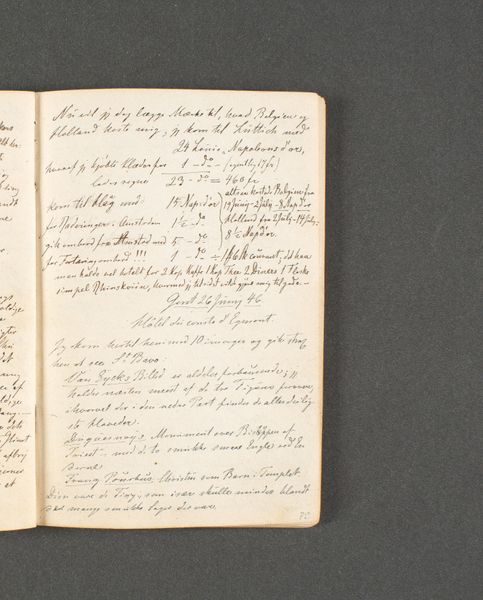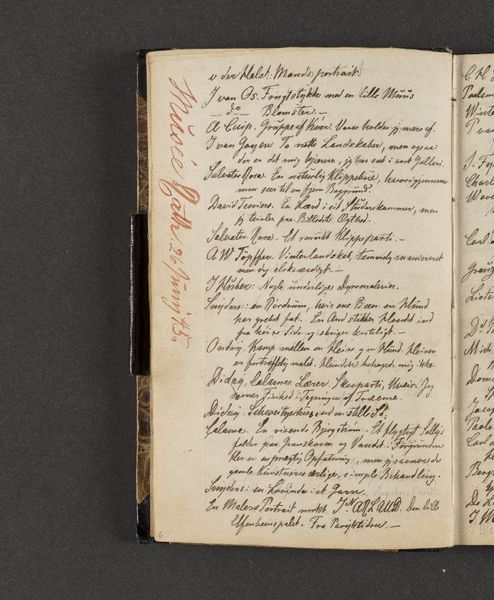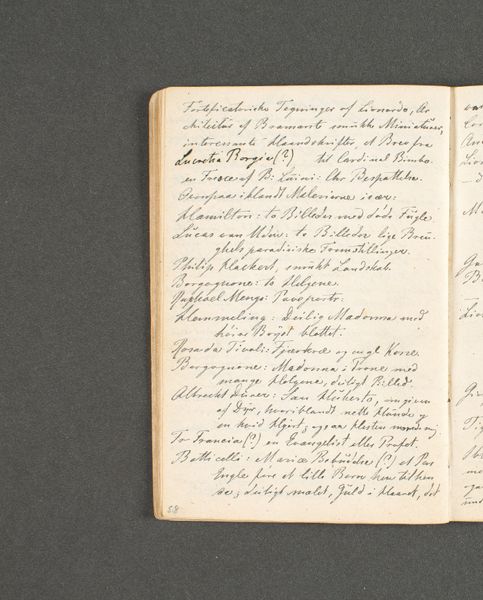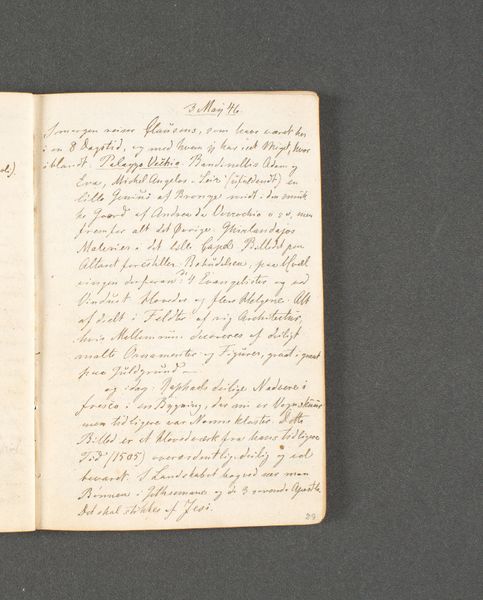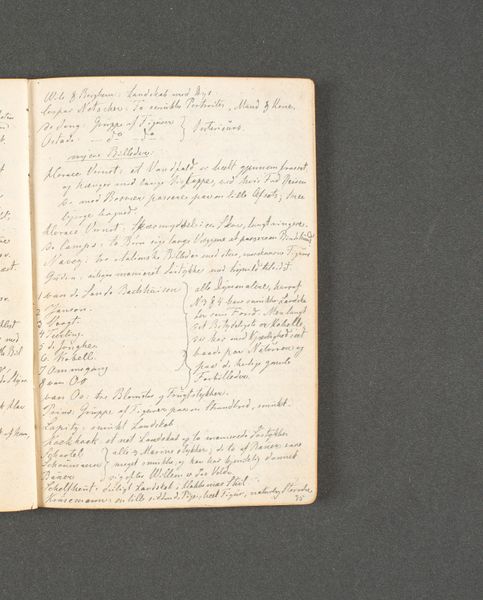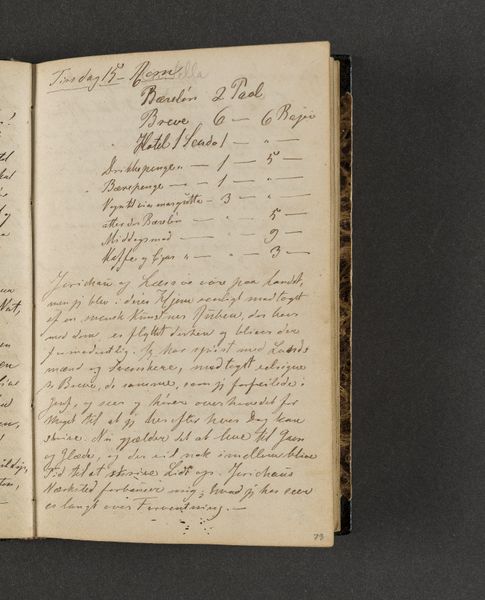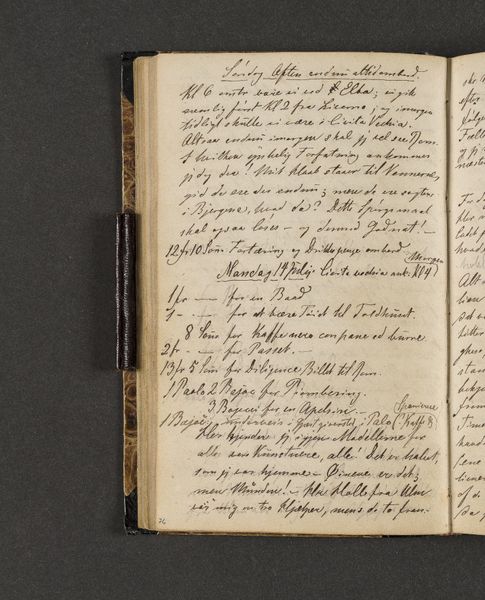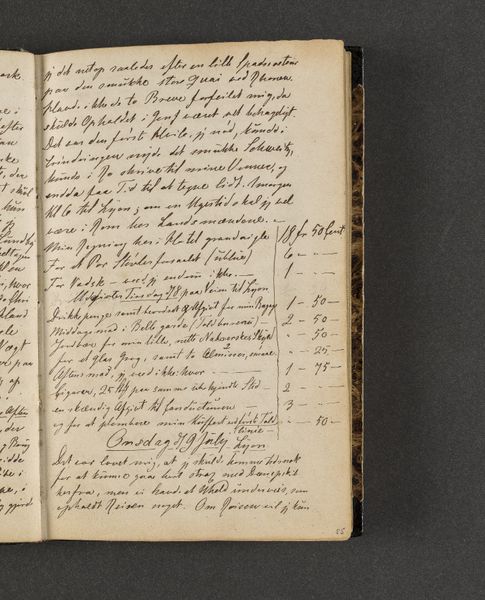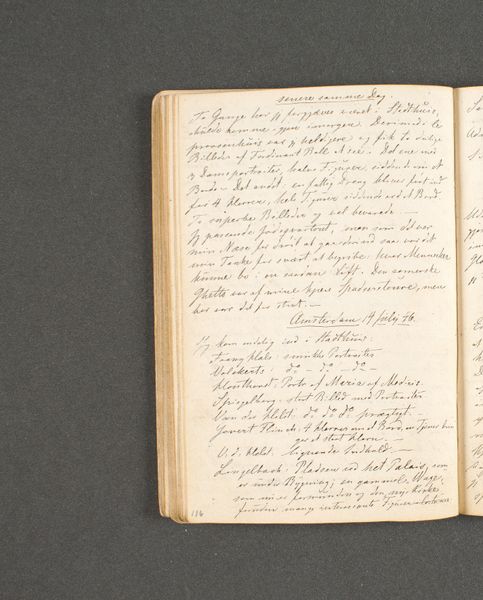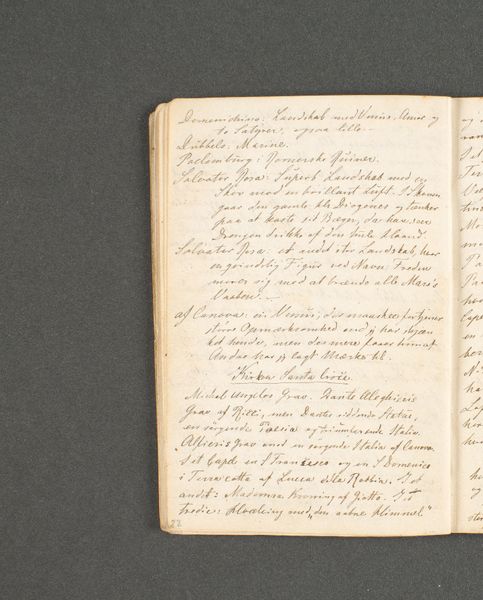
drawing, paper, ink
#
drawing
#
narrative-art
#
sketch book
#
landscape
#
paper
#
personal sketchbook
#
ink
#
romanticism
#
sketchbook drawing
#
sketchbook art
Dimensions: 131 mm (height) x 89 mm (width) (bladmaal)
Curator: We’re looking at a page from Johan Thomas Lundbye’s travel journal, specifically titled "Rejsedagbog. Pavia," created in 1846. The artwork resides here at the SMK. It's primarily rendered in ink on paper. Editor: Immediately, I'm struck by the intimacy of the piece. It feels like we're peeking into the artist's private thoughts and daily observations, presented at such a small scale. There’s something inherently tactile about seeing writing filling both pages of an open journal. Curator: Exactly. Notice the handwritten lists alongside what appear to be observational notes and quick sketches we can't fully see in our crop here. The composition on the visible left-hand page presents the contents as ordered yet personal, in the way he is listing foods and travel budget information. Editor: Thinking about the materials, it’s the humble nature of ink and paper, so accessible and easily transported, that underscore the function of the journal, documenting observations as quickly and effectively as possible while on the move. I wonder about the specific ink—was it something he mixed himself, or was it a commercially available product? What does that say about art supplies at the time and Lundbye’s engagement with the art market, if any? Curator: The journal's function within a Romantic context cannot be overlooked; it elevates everyday experience through an emotional lens and is deeply involved with landscape concerns, a visual archive tied to Lundbye’s encounters. He catalogues, rather analytically at times, experiences that transcend simple documentation, inviting an intimate relationship with nature. Editor: And that invites questions regarding labor and time too. To maintain such a detailed record while traversing unknown places suggests a very particular investment of the self in one’s practice. Writing and mark-making become almost ritualistic elements. It makes one wonder whether the constraints of travel impacted material access and methods. Curator: Indeed. Seeing a page ripped from the middle of the artist's travel documentation, taken as a part of a larger series of works, gives one cause to pause and truly appreciate a Romantic approach to direct interaction with landscapes. It goes well beyond our surface interpretation of its initial intention, inviting inquiry and a personal relationship between the artist and the world around them. Editor: For me, seeing the everyday records and private nature of this piece encourages us to remember the artist in the historical context as something of an artisan in process, constantly learning through the literal and manual processes of recording lived encounters, something that feels quite modern despite its traditional forms and media.
Comments
No comments
Be the first to comment and join the conversation on the ultimate creative platform.
